Karachi's nine lives: ‘The injured men just keep reciting the Kalima’
From Bheempura to Juna market an apocalyptic madness has descended on the city.

This Friday, the strains of prayer verses from nearby mosques mixed with the sounds of machine gunfire.
It dragged on for hours. As the fighting spread throughout the city, areas surrounding Lea Market — where reports of firing emanated as early as 11 am — were whipped up in a similar frenzy.
An announcement of 'shoot on sight' orders may have been issued for law enforcement agencies, but on Friday afternoon, the only people who embraced that order were the fighters.
The sound of bullets being fired from every direction doubled as a sound track to the bloody afternoon.
Residents of Juna Market alleged that the rooftops and windows of buildings were being used by the gunmen.
"It is straight fire," was a phrase heard throughout the afternoon.
It means that two groups are shooting at each other directly. In theory, it is simple to explain. Armed men fire at each other. When one group retreats, there is a loud call for the other group to move forward. As it claims more space, there is retaliatory fire from the other. Each time the scream from a group is accompanied by a hail of bullets.
In Juna Market, there was an incomprehensible voyeurism. People viewed the battles from their balconies and windows. Children skipped on the street. The older men huddled in doorways as the shots were fired a few feet away.
"Eight years ago," recalled ambulance driver Nasir Brohi, "I once spat out paan on this road. Someone stopped me and said, 'This is our land. We pray here. Please do not do this'. I never did it again. Now look at what they have done to this street."
"They have turned this city into Beirut."
The gates of the nearby police station remained closed.
"Maa qasam, [On my mother] if I had orders I would not leave any of these f***ing men alive," muttered an angry police officer, resentful that his higher-ups had merely told the force to "wait and see". He had ventured out to speak to the ambulance drivers.
High-ranking police officers drove up in their armoured cars and air-conditioned vehicles. They hastily turn back after a new burst of gunfire. "Check that out," exclaimed a policeman with disgust.
According to the police, they had no 'shoot on sight' orders. "Even if they see someone with arms, they are not allowed to do anything," remarked an ambulance driver.
Could this be the backlash from the Sarfraz Shah case? Are the Rangers too frightened to point a gun now? "Perhaps," said an officer, when asked if this were the case. "The IG and the DG Rangers were removed, even though it was Rangers men who were involved. But who will protect us if we do act?"
This is how the force thinks. Indeed, just hours earlier in Bheempura, the police had turned back from a grenade attack that killed two men and injured five others. In Lea Market, where groups clashed for hours, there were reports that gunmen had encircled an armed personnel carrier.
In Juna Market, the residents watched as the firing continued, the fighters screamed out, and gunshots went off so loud that it seemed as if someone had shot the gun from your shoulder.
A young Civil Hospital doctor, Rizwan Hussain, stood watching. His night shift was never ending. "Our MS, Dr Syed Qureshi, has asked us to cooperate, given the situation of the city."
His bloodstained gloves provided a hint of the macabre scenes he has witnessed over the past few days. "I have never seen a situation like this," he said. "We would get a maximum of one or two gunshot cases. In the past two days, I've treated up to 20."
Hussain recalled the condition of the bodies he sees — they are bleeding heavily, with five to six bullets in them. The injured repeatedly recite the Kalima.
"That is all they do. One strapping young guy - he must have been 20, you know," Hussain said, flicking a cigarette. "He called his family and told them he had six bullets in him. He asked them to come to Civil Hospital as soon as possible"
Edhi staff told harrowing accounts. One man had left his sick mother at home and ventured out in search for food. Another was a building watchman.
Khadim Hussain, a resident who runs a shop in the area, said, "Our family is in the Punjab. Where do we escape to?"
Residents alleged that the now-defunct Peoples Amn Committee men had joined hands with the Awami National Party and were killing Mohajirs and Kutchi Memons. The latter two were accused of doing the same.
The gunmen are not 'outsiders' or the oft-quoted 'third element'.
"Our own people are supporting these men," said Hussain.
Almost as if to provide proof, a water bottle was dropped to a gunman from a balcony.
The gunman — clad in a yellow t-shirt and jeans — took a sip, and resumed shooting.
It was hours before the gunfire stopped — momentarily. The welcome silence was prompted by the arrival of three Rangers cars, which the ambulance drivers took as a hopeful sign.
"They will clear the area. Then we can enter."
But at the sound of gunshots, the Rangers men, who had disembarked, scurried back.
They returned with reinforcements - two police vans and a fire brigade. The convoy trundled forward. Residents appeared relieved, others, joyous. Waving frantically, they implored media personnel to come forward and see what had happened.
But then, what emerged in the lane was a sinister new side to the violence in Karachi. "Gunmen have set my house on fire!" cried Zeeshan. His two-storey house, home to 17 people, was ablaze.
At least two women and three children escaped the fire by jumping on to the roof of the next building.
With tears in his eyes, Zeeshan alleged that the arson was due to the 'gangsters' trying to take over the area. "They want our property so they can expand their turf. They control the neighbouring areas… this is next."
"Rashid Bengali did this," he exclaimed. Another voice piped up. "This is being done by Baba Ladla's men."
Zeeshan said the gunmen used petrol to set his house ablaze and threw their belongings out. "I have been calling all day! I called the police, the Rangers, the fire brigade. No one came, except one SHO and he wasn't even from this area. There was one helpful Rangers officer - he has sent all these cars."
Water gushed out of the hose as the firefighters attempted to put the fire out. Ashes rained down on the crowd of rescue workers, reporters and onlookers.
While the fire had raged for over an hour, it took six vanloads of Rangers for the fire brigade to feel confident enough to move in. Contrary to the perception that the firing had stopped because of the Rangers' presence, the faint sounds of gunshots could still be heard.
Zeeshan's tearful eyes soon turned manic. In a matter of seconds, he was in a headlock with a man, fighting bitterly. While he was pulled away, the sounds of shouting came from the neighbouring lane.
Rangers men, he declared later, had arrested two Kalashnikov-armed men who set his house on fire.
As Rangers' vehicles began backing out from the lane, photographers and cameramen - who had finally felt confident enough to move forward - pressed forward to see who had been captured.
That is when the loudest gunshot of the afternoon ripped through the air from a balcony. It was time for the firing to restart.
Compared to the 1990s?
This kind of violence is not new to Karachi's residents, police officers and rescue workers. Memories of the 1990s - the shuttered shops, closed petrol stations, lack of resources - played on everyone's minds.
But rescue workers who have picked up bodies as young as that of a one-and-a-half year old baby differ.
This, they say, is worse.
Earlier in the day, five labourers were injured when they were fired at near Hasan Square. The men who brought them to the Edhi Centre at Sabzi Mandi also fired at the office's gate. Rescue workers hurriedly transferred the injured men into cars and sent them to the hospital.
Dangers still lurked. "The armed men are hiding in the lanes on either sides of our office," said a representative.
"I think there is a slight improvement in the nature of the violence - but it's very slight," reflected Anwar Kazmi, a stalwart at the Edhi Foundation.
"The biggest difference between the violence of the 1990s and now is that there is no respect for ambulances. People used to respect the rescue work. In the 1980s, I remember there was once a great deal of cross-firing going on. Abdul Sattar Edhi saheb came to that area with 13 cars. Both groups stopped firing, let Edhi saheb pick up the dead and injured, and then started firing again."
"Now, they fire at ambulances."
Seven Edhi ambulances were shot at and one rescue worker was injured. Ambulance drivers concurred that the violence was far worse than what they had witnessed in the past.
Three Edhi ambulances stood for hours at Juna Market, waiting to check on unconfirmed reports of a body dumped near a mosque, and to deal with possible injuries.
At Lea Market, where firing was ongoing for hours, men waved the Edhi ambulance on. "Straight fire ho raha hai," said one man, echoing the phrase of the day. "Come back later."
Ambulance drivers - some of who have spent 25 years on the job - are accustomed to the gagging smell of a body, threats and ear-drum splitting gunfire.
These days they are realising that the city - whose every inch they have trawled - is increasingly unwelcome to their familiar soap-box vehicles.
Now it is taking hours for rescue workers to pick up the dead and the dying, because clashing groups will not allow them to enter. "Until someone signals [enter] we cannot pass," said Brohi, pointing to the men openly shooting with machine guns and AK-47s at Juna Market. "Even then, we have to run in, grab the body and leave."
Anger at the rescue service and the police was evident in Bheempura, where it took over two hours for the ambulance service to take away the injured, alleged bystanders.
"This man walked in to buy channas from the store," said resident Ali Mohammad. "A man came by on a motorcycle. He fired and threw a grenade. A betel nut vendor was among his victims. A pool of blood trickled on to the street." It was difficult to tell the blood from the paan spittle in the gutter.
As high-level meetings continue to tackle the situation, hordes of young men on the streets are fighting bitterly. Their 'battlegrounds' are cordoned off by stick-wielding men. The police stand by, powerless to do anything. At the Edhi Ambulance Centre, phone operators wield one desperate phone call after the other. The morgues fill up. Edhi issues statement after statement appealing for peace. Remarkably, a motorcyclist near Hasan Square managed to escape the whizzing bullets. But for Karachi, its nine lives appear to be running out.
Published in The Express Tribune, July 9th, 2011.
A slideshow of pictures from the Karachi can be seen here.

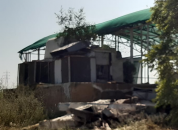
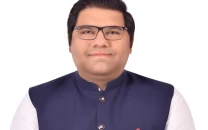
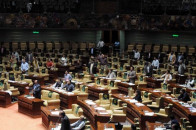
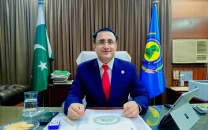
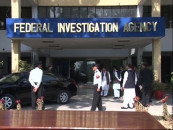













COMMENTS
Comments are moderated and generally will be posted if they are on-topic and not abusive.
For more information, please see our Comments FAQ